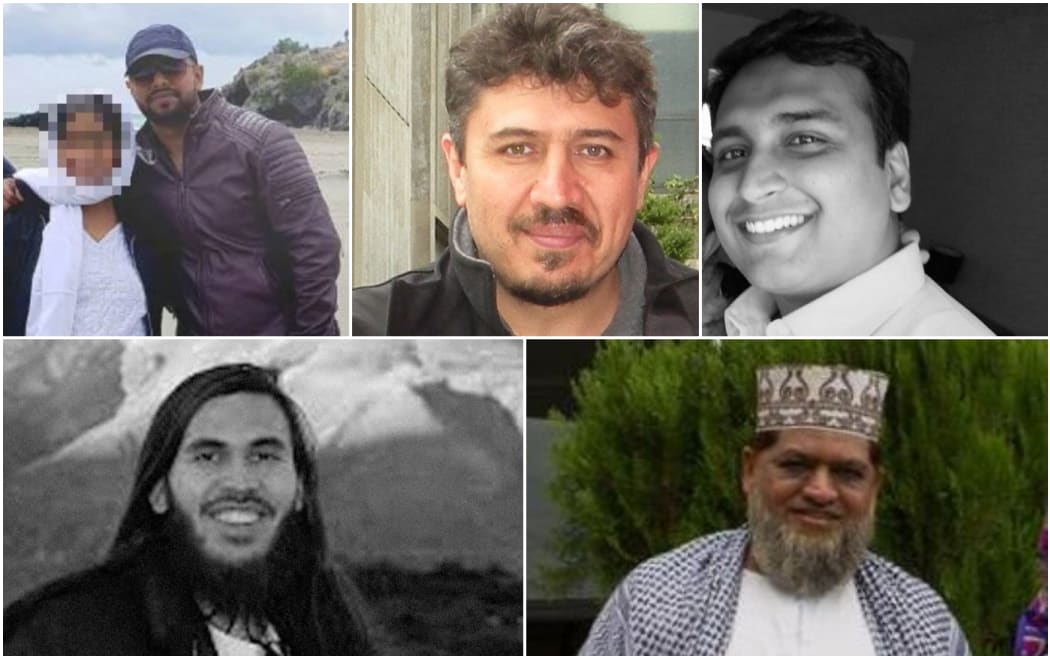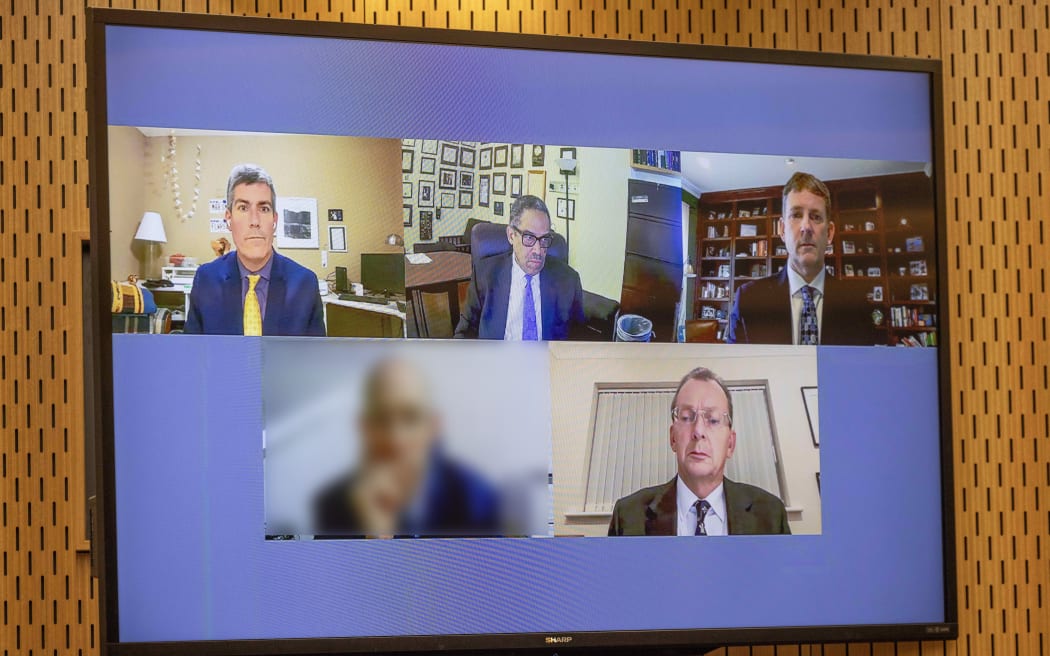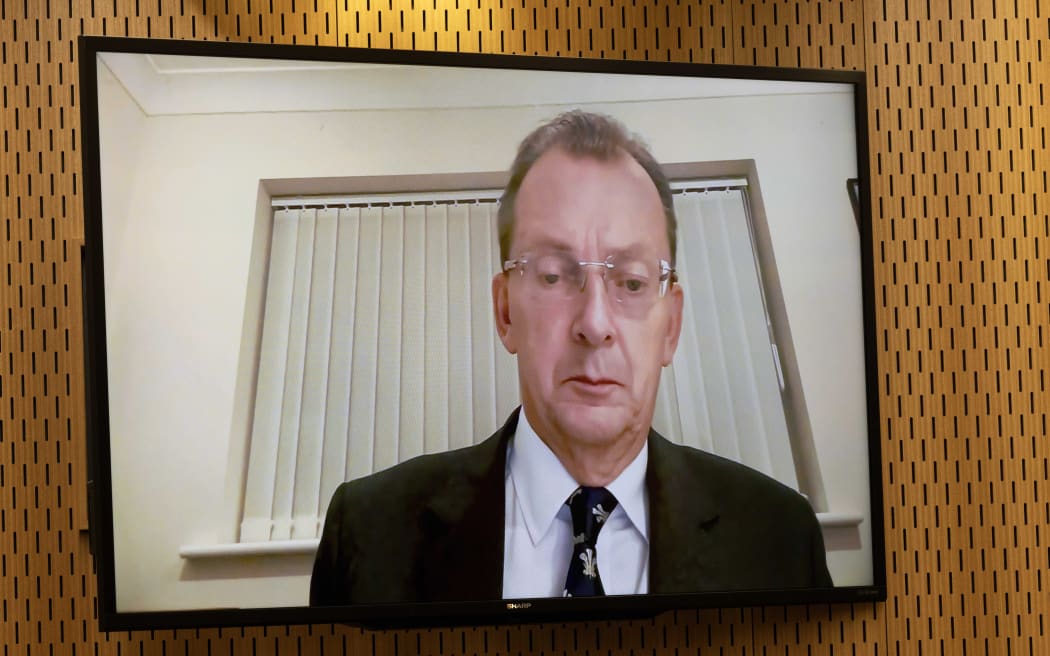
The survivability of five shaheed has been discussed in court. From top left: Ramiz Vora, Zekeriya Tuyan, Farhaj Ahsan, Tariq Omar and Musa Patel. Photo: SUPPLIED
Getting victims of the Christchurch terror attack to hospital sooner would not have necessarily saved their lives, an inquest has heard.
The survivability of five shaheed who were shot during the 15 March 2019 massacre was discussed on Wednesday at the inquest into the deaths of 51 worshippers at Al Noor Mosque and Linwood Islamic Centre.
Deputy Chief Coroner Brigitte Windley said she wanted to know if any further medical intervention could have prevented the deaths of Ramiz Vora, Farhaj Ahsan, Tariq Omar, Zekeriya Tuyan and Musa Patel.
"It's not about faint or fanciful probabilities but, in the context of the attack, the steps or measures that could have realistically been taken that would have improved survivability," Coroner Windley said.
The court had to examine whether there were any missed opportunities, alternative triage methods or medical treatment that could have "disrupted the fatal outcome" for the shaheed.
Six medical professionals from New Zealand, the United States and the United Kingdom gave evidence.

Five of the six medical experts giving evidence on Wednesday. Photo: Peter Meecham/The Press
Ramiz Vora, killed at Al Noor Mosque, was discussed first.
Dr John Hick said Vora's injuries were potentially survivable with further medical intervention, but he would have needed to be taken to hospital within minutes of the attack.
Police arrived on scene about 15 minutes after the attack and had to make sure the scene was clear before offering first aid to victims.
"That far exceeds the length of time I would expect this individual to survive these injuries," the US-based doctor said.
US trauma surgeon Dr Andre Campbell told counsel for Vora's family, Kathryn Dalziel, that even in the best of circumstances, "I don't think there is going to be a chance with this gentleman" surviving outside of hospital.
Even in hospital, medical professionals needed to move very fast to save people with such injuries, he said.
Farhaj Ahsan was also killed at Al Noor Mosque.
New Zealand forensic pathologist Dr Martin Sage said the wounds Ahsan received were enough to cause his death in "short order".
Dr Hick said timely interventions could have resulted in his survival, but there was no way first responders would have been able to tell which of his injuries was the most life-threatening.

Professor Charles Deakin. Photo: Peter Meecham/The Press
UK-based Professor Charles Deakin said he did not deny that getting victims to hospital in quick succession helped increase the chance of survival - but he did not think it would help in this case.
"Getting someone to hospital with these injuries is not a magic bullet to cure them. Just because they get to hospital does not mean that they are going to survive.
"These are really terribly injured people who are as close to death as could possibly be imagined and just because they have physically arrived in hospital does not mean that survival is guaranteed.
"I do not dispute that it will improve their overall chances but some of these people's chances of survival were so slim anyway that I don't think realistically, certainly in this case, that even getting them to hospital more promptly would sadly have resulted in his survival."
Dalziel told the experts Ahsan's family was concerned that it appeared from CCTV footage from within the mosque that first responders did not do a complete check of him for injuries.
But Professor Deakin said the triage process that occurred was entirely appropriate.
It was not possible for first responders to be tied up doing a full assessment of just one patient given the number of victims needing help, he said.
"From that aspect, the care delivered was correct and appropriate."
UK-based Professor of forensic pathology Guy Rutty told the court the time it took for first responders to reach Al Noor Mosque was too long for Tariq Omar's injuries to be survivable.
Dr Campbell had a differing opinion, however, believing Omar could potentially have been saved if he had got to hospital in time for treatment to be given.
He said his injuries were significant but he had seen people with similar injuries survive.
Zekeriya Tuyan was shot at Al Noor Mosque, and died in hospital 48 days later.
Tuyan was the first person to be taken to hospital by ambulance, arriving at 2.30pm.
The experts were asked if Tuyan could have survived had he been taken to hospital 20-30 minutes earlier.
But Professor Deakin did not believe the outcome would have been any different.
"I think there would have been a very similar pathway irrespective of arriving 30 minutes earlier in hospital, I'm afraid. So, I think even getting him to hospital quicker is unrealistically likely to make any significant difference to the course of events … and his final outcome."
Dr Campbell said it was always better to get patients to hospital as quickly as possible for damage control.
But he said ultimately Tuyan's medical team made a "herculean effort" to try to save his life.
The final victim discussed was Musa Patel, who died on a stretcher as he was being prepared to be taken from Linwood Islamic Centre.
He was visiting Christchurch from Australia at the time of the attack.
Professor Rutty said Patel's case was the most difficult he looked at and he initially struggled to work out why he had died.
Asked if getting Patel to hospital earlier would have increased his chance of survival, Professor Deakin did not believe it would have made any material difference to the outcome.
Dr Campbell said first responders at the scene did their best to help him, and he believed his injury was possibly survivable, but it depended on a variety of circumstances.
FENZ self-deploying to scene of attack 'would have contributed to chaos'
A senior Fire and Emergency New Zealand commander said he was "extremely proud" of the position the organisation maintained on the day of the attack.
Brendan Nally told the Coroners Court that a FENZ representative was inside the police District Command Centre and providing continuous updates to a manager.
The organisation had told both police and St John it was poised to respond to the incident if needed but was ultimately never deployed.
"I'm extremely proud of the FENZ organisation, our discipline to maintain our position and wait and standby in ready to be deployed rather than arriving on mass with our large vehicles which would have contributed to chaos and would have slowed down movement of other emergency vehicles.
"I'm extremely proud of our organisation's discipline in not responding."
Nally told the court that fire personnel were not trained to deal with armed shooter incidents and did not have access to ballistic protection.
This meant they could only work within the outer cordon of a scene.
But Nally said the "hazardscape" was expanding rapidly and no-one in New Zealand could take the view of there not being a real risk of such an attack happening again.
FENZ was prepared to work with other agencies to learn and improve how it responded to emergency incidents and would "enthusiastically" look at any recommendations made by the coroner, he said.
The inquest will examine the following 10 issues over seven weeks:
- Events of 15 March 2019 from the commencement of the attack until the terrorist's formal interview by police
- Response times and entry processes of police and ambulance officers at each mosque
- Triage and medical response at each mosque
- The steps that were taken to apprehend the offender
- The role of, and processes undertaken by, Christchurch Hospital in responding to the attack
- Coordination between emergency services and first responders
- Whether the terrorist had any direct assistance from any other person on 15 March 2019
- If raised by immediate family, and to the extent it can be ascertained, the final movements and time of death for each of the deceased
- The cause of death for each of the victims and whether any deaths could have been avoided
- Whether Al Noor Mosque emergency exit door in the southeast corner of the main prayer room failed to function during the attack and, if so, why?
The inquest continues.

